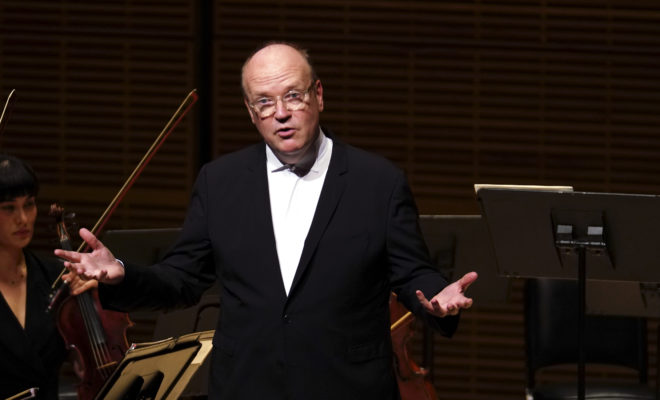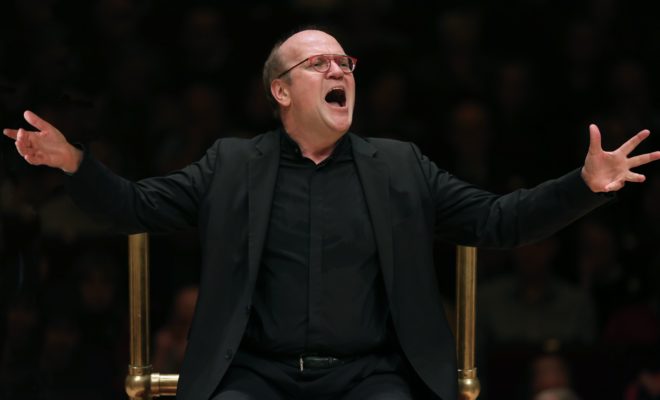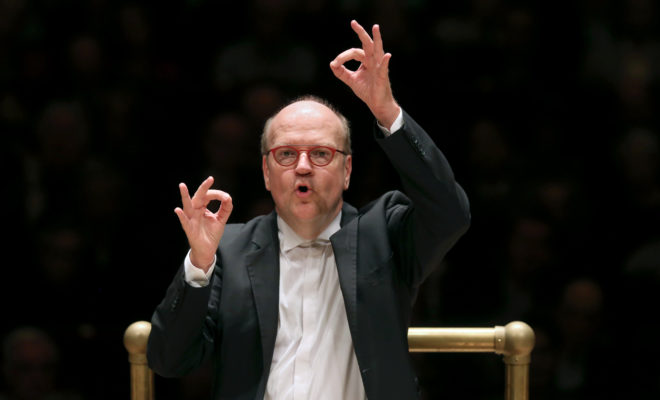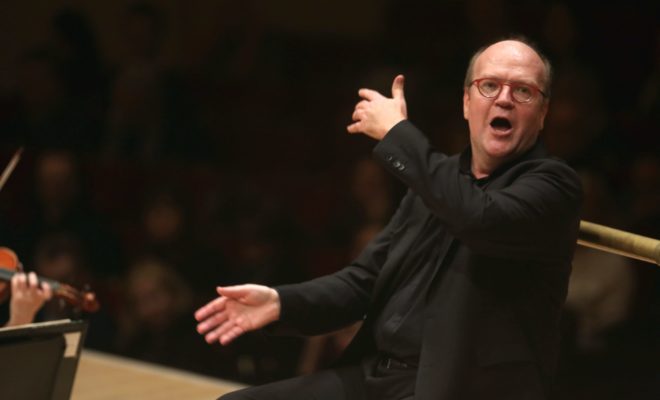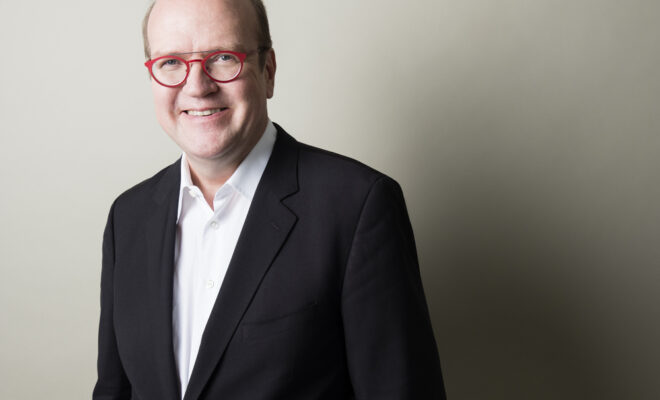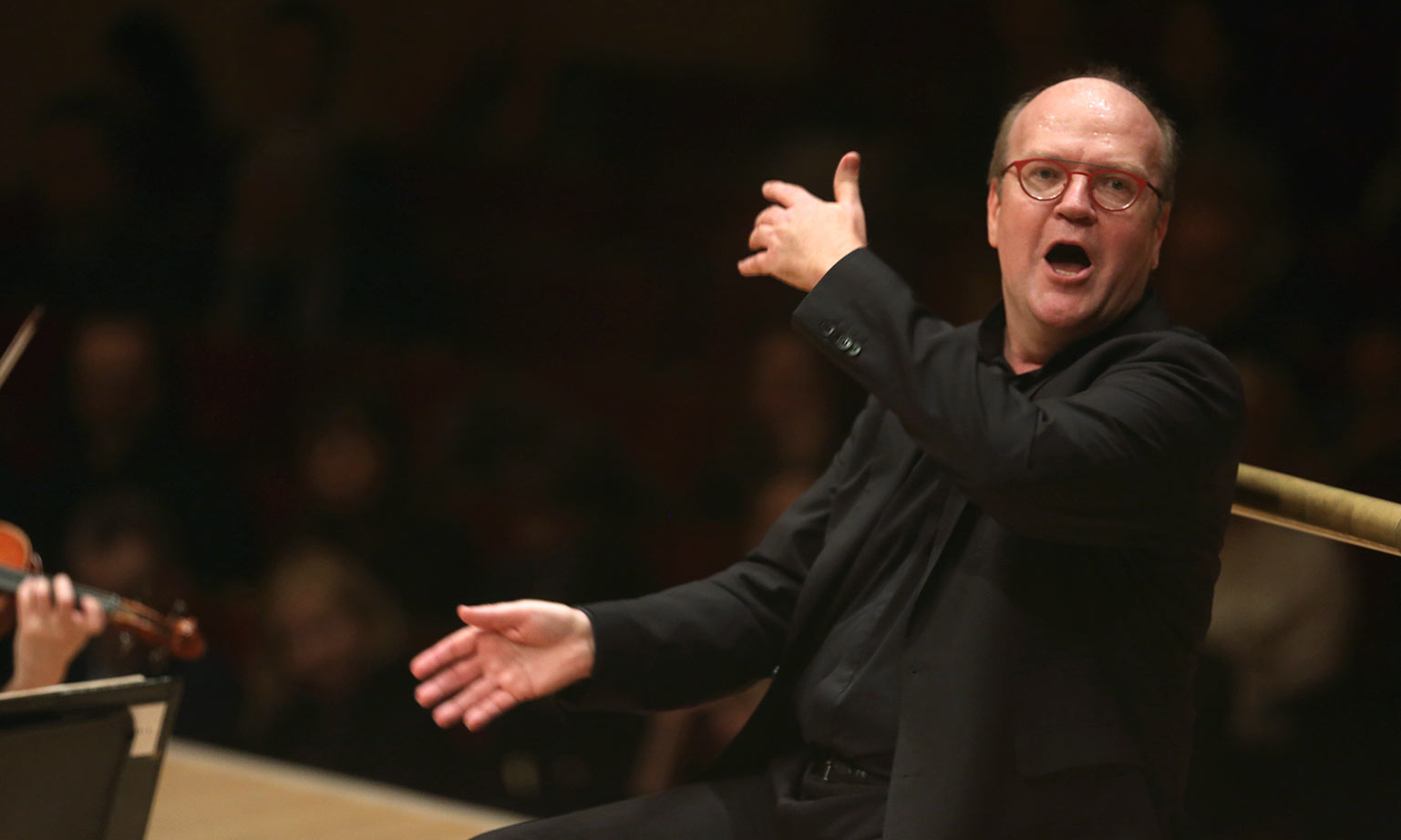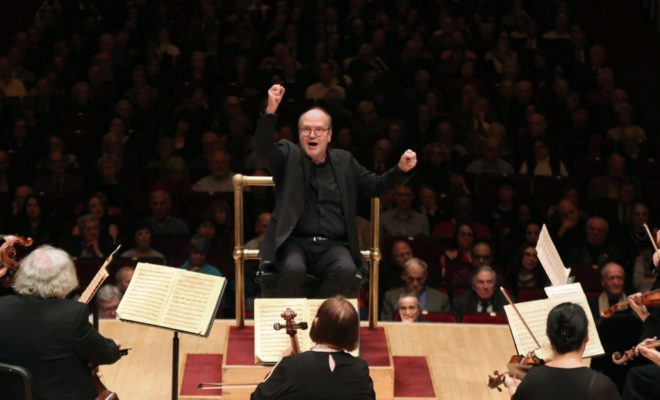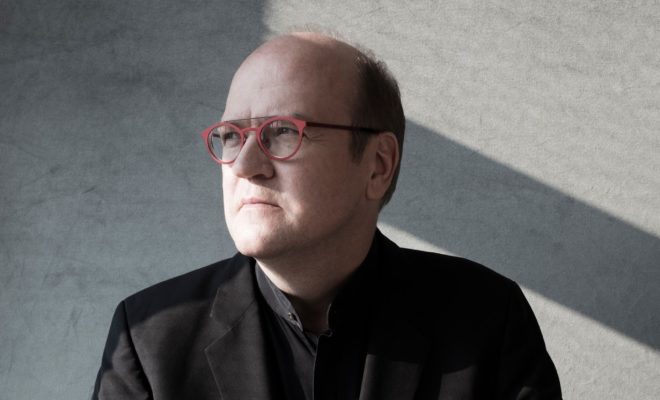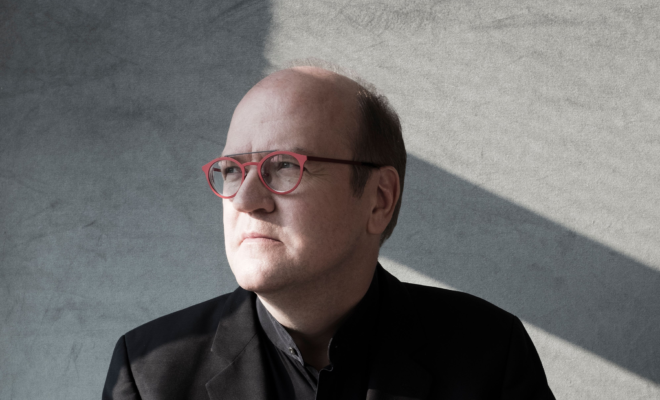Once in a while I feel the need to divert slightly from the music of Bach himself in order to put it in better context. We have visited Dietrich Buxtehude in Lübeck; and here we get acquainted with a composer who was a huge figure in Bach’s time: Georg Philipp Telemann.
In many ways Telemann was a larger-than-life figure. He lived an exceptionally long life: he was in born in Magdeburg in 1681 and died in Hamburg in 1767, at the venerable age of 86. Born four years before Bach, he died when Mozart’s career as a Wunderkind was basically over. By 18th-century standards, that makes him the musical equivalent of the biblical Methuselah, who reportedly died at age 969. (For some reasons historians have repeatedly expressed doubts about that number.)
As a musician Telemann was mostly self-taught – or so he said in his many autobiographies, which tells us a few things about the modesty of his character. If the word “multi-instrumentalist” had been in use in his days, he would have been the poster boy for it: he reportedly played all keyboard instruments, the violin, the viola da gamba, the zither, the recorder, the flute, the oboe and the double bass, among others. He composed his first opera at age 12.
The long story of his life is very different from the placid stream of Bach’s, and yet both intertwine at regular moments. Their relationship goes back to Telemann’s tenure as Konzertmeister and then Kapellmeister in Eisenach (Bach’s birthplace) while J.S. was organist in Weimar. Beyond mutual respect, a real friendship must have blossomed, since Telemann was Carl Philipp Emmanuel’s godfather at his baptism in 1716 (giving him his second name, “Philipp”).
There was also a Leipzig connection between the two, although at different times. Before devoting himself entirely to his musical career, Telemann studied law in Leipzig, and he was active as a musician in the city at the beginning of the 18th century. His difficult dealings with Kuhnau (Bach’s predecessor) while working as his assistant at the Thomaskirche led him to accept a new job and relocate to Sorau (now Zary in Poland) in 1705. Telemann had re-founded Leipzig’s Collegium Musicum in 1704, which Bach later took over in 1729.
In spite of Telemann’s past troubled dealings with Kuhnau, he was the city council’s clear favorite when time came to appoint his successor in 1723. Telemann showed his shrewd business side, professing interest in the job only to use the Leipzig offer as leverage to improve his conditions in Hamburg where he would end up in charge of almost every aspect of the city’s musical life. The job was then offered to and declined by Graupner, which led to the hiring of the most famous ‘Plan C’ in the history of music: Johann Sebastian Bach.
If Telemann was a much bigger star than Bach during his lifetime, posterity reversed their fate. Telemann’s immense output (he is listed in the Guinness Book of Records as the most prolific composer ever – no kidding!) came back to life slowly and bit by bit as the interest in Bach’s music developed in the 19th century, but it would have to wait until the 20th century before definitely coming out of oblivion. The supreme irony is that many of the first works by Telemann to be printed and distributed in the modern era were thought to have been composed by Bach, who used a significant amount of his music in Leipzig.
Many comparisons have been made between the music of the two, mostly unfavorable to Telemann. It is in my opinion widely unfair. It is not that Telemann’s music compares to Bach’s in terms of overall quality, but it stands as a rich and varied catalogue of the tastes of his day. Browsing through the phenomenal amount of music Telemann produced leads to incredible discoveries. There is of course a lot of run-of-the-mill stuff produced on an almost pre-industrial level (talk about hundreds of orchestral suites!), but when his imagination was set on fire by special circumstances or a specific text in the case of vocal music, he could come up with true masterpieces that have a unique personality and an appeal of their own.
Telemann’s music always has a “natural” side that makes it immediately approachable and understandable. He was proficient enough in the art of counterpoint (which is attested by many of his sacred compositions) but his interest was elsewhere. Telemann’s intentions were focused on his will to stir emotions in the listener’s heart, in triggering an emotional response from his audience rather than achieving a high level of intellectual, emotional or holistic understanding. In that respect, although Telemann cannot really be seen as a precursor to the early classical style, his intentions through composition were not very different from the ones of his godson, Carl Philipp Emmanuel Bach, who would eventually succeed him in Hamburg after his death in 1767. C.P.E. Bach created a new personal style (the famous Empfindsamer Stil) which aimed precisely at touching people on the emotional level through a direct transmission of feelings from the performer to the listener.
Side by Side Comparisons
Comparing Telemann’s and Bach’s music is indeed rarely favorable to Telemann, unless one wants to take into account the emotional response of the average 18th-century listener, which was necessarily quite different from ours. With that purpose in mind, it is extremely interesting to put side by side the musical setting of a same text by both composers. This is what I invite you to do with an excerpt of Telemann’s setting of the Brockes-Passion, a popular libretto on the Passion of Christ which Bach also used when composing his own St. John Passion.
The aria Eilt, ihr angefochtnen Seelen (“Haste, troubled souls”), whose text has been set to music by both composers in their respective works, will provide a very interesting point of comparison. There are a few minor differences between the two texts, which do not however significantly alter its meaning. The scene features a “Faithful Soul” (Glaübige Seele) in conversation with a “Chorus of Faithful Souls”.
Here is the translation of the text in Telemann’s work:
|
Hasten, troubled souls, |
|
From Achshaph’s murderous pits, come! – Where to? |
|
To Golgotha. |
|
Hurry on wings of faith, fly! – Where to? |
|
To the Hill of the Skull, |
|
Where your salvation blooms. – Where to? |
|
To Golgotha. |
Before comparing the two musical settings, one very important point needs to be clarified: Telemann’s Brockes-Passion is not meant for liturgical use (although it has been performed in churches often during his lifetime); it is more of a sacred opera on the death of Christ with freely written texts, including for events related in the Scriptures. Bach’s St. John Passion is intended for the church; that came with the obligation of using the text from the Gospel without any alteration. This being said, the matrix is the same: a theatrical staging of the events of the Passion through music.
Bach’s work is every bit as operatic as Telemann’s, and both use the same tools: secco recitative, accompagnato recitative, arioso, aria, chorale and chorus (including turba choruses for the crowd in the Scriptures). In choosing to borrow from the text of the Brockes-Passion, Bach like Telemann was embracing its realistic and sometimes even graphic depiction of the sufferings of Jesus.
In the example by Telemann, the composer’s efficiency is in full display from the get go: the key word here is eilt (“hasten”), and we hear the violins rushing in unison in an opening ritornello that could come straight out of a Handel opera. The admonitions of the “Faithful Soul”, all in imperative (eilt, kommt, flieht), are answered with more runs by the violins and the obbligato organ (a nice unusual color). The flow stops only for the questions from the “Chorus of Faithful Souls” which are isolated and presented in a clear-cut manner, very easy to follow for the listener. The whole aria is a short but extremely efficient affair kept mostly in the main key.
Now compare it with the setting from the St. John Passion by Bach. A raising figure erupting from the bottom of the violins’ register depicts the rush of believers. Very early on the wave of notes is interrupted by and then mingled with repeated two-note motives which prefigure the questions from the Faithful Souls on Wohin? (“Where to?”). The vocal line depicts the erratic wanderings of the Soul rushing to Golgotha while the chorus keeps asking more and more pressing questions (the heightened pressure being underlined by hemiolas). Canonic writing between the first violins and the continuo line in the ritornellos evokes the different groups of believers following each other. Each section of the aria ends with a fermata on the chorus’ question answered emphatically by the soloist: “To Golgotha.”
This is a much longer and much more sophisticated structure, and there is a lot to admire in Bach’s control of harmonic rhythm as well as combination of its different intertwined elements. It is both structurally complex and operatic in tone.
Now the question is: which of Telemann’s or Bach’s setting made the strongest impression on its audience?
Try to imagine yourself seated in a church pew in a German church or in another concert venue in the early 18th century. You are hearing this music probably for the first time and you can’t listen to it again at home on your phone afterwards. You can’t read about in online or in books. What you hear for the first (and only) time is what you get – literally.
- Which piece creates the clearest impression?
- Which piece carries the most obvious message to you as a possibly undereducated (at least musically) member of the audience?
- Do you understand at first hearing the harmonic and structural complexities of Bach’s music?
- Do you prefer the comfort of the simpler yet vivid and clever musical depiction by Telemann?
I have used this expression a few times: Bach’s music is something that needs to be peeled off. (I’m stopping short of bringing the onion in the conversation.) The more we listen to it, the more we can study it, absorb it, reflect on it, the deeper the impression.
Reflection on Bach’s music is a luxury that came to us with time. His contemporaries didn’t have that luxury; it is why Bach’s music was kept alive and eventually brought back to the fore by later generations of expert musicians (Mozart, Mendelssohn, Schumann, Brahms) who had the opportunity to contemplate it with a new perspective illuminated by past experience. Bach’s music, which was considered outdated by many of his contemporaries because of its contrapuntal richness, was actually way ahead of its time and required patience before obtaining full vindication.
This doesn’t mean that we can’t be struck by Bach at the very first listening – indeed his music often has the uncanny capacity to reach us deeply without us knowing exactly how it works. Learning its intricacies only makes this first impression even stronger.
Telemann’s music has finally earned its rightful place in the repertoire again, and I think it’s a blessing for all. The baroque music lover in you might prefer Bach’s depth and complexity (most people certainly do, and you can count me in a thousand times), but Telemann’s music is witty, clever and incredibly efficient, even for modern sophisticated audiences. Playing it is fun, and rewards for the performer can be reaped early in the process – something that cannot always be said of Bach’s music.

